Due to an unfortunate family event, the opportunity arose for the Sprite clan to spend a week and a bit of the school holidays actually on holiday in Tasmania. I had spent nearly 2 weeks there a few weeks previous, but I was working and attending to family business and didn’t have a great deal of opportunity to actually get out and about. This was an opportunity to address that, and spend time doing touristy things and getting out with the cameras.
The weather was not favourable, and I have never experienced challenges with light to the extent we did. Not only was it almost perpetually cloudy, but being so far south compared to what we’re used to, the days were extremely short and the sunlight angle was all wrong. The majority of my photos from the trip have seriously blown-out grey skies, even though I had the camera set to under-expose by a full f-stop (a habit I learnt many years ago to avoid over-exposed photos in patchy light). It was definitely a learning opportunity.
The Tahune Airwalk
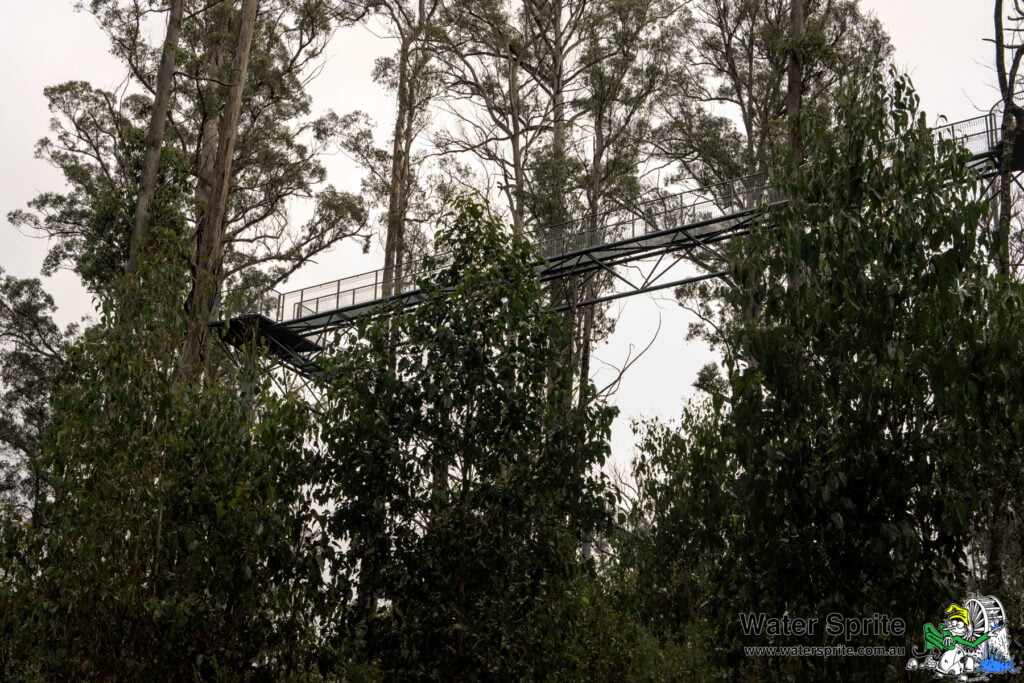
Our first tourist port of call was the Tahune Airwalk. The day wasn’t brilliant, weather-wise, and this was a recurring theme of our time in Tasmania. However, we didn’t know that at the time. It wasn’t windy, which was the saving grace, but it did rain for much of the day. We were lucky: a severe weather warning for the following day was issued about lunchtime of the day we were there, predicting severe winds the following day. The site managers made the call that they were not going to open the following day, and chased us all off-site half an hour early to give them time to secure everything. In fact the severe wind warning remained in place off and on for much of the next week, so I don’t know how much they were open that week. We may have struck it lucky in picking that day, despite the rain.
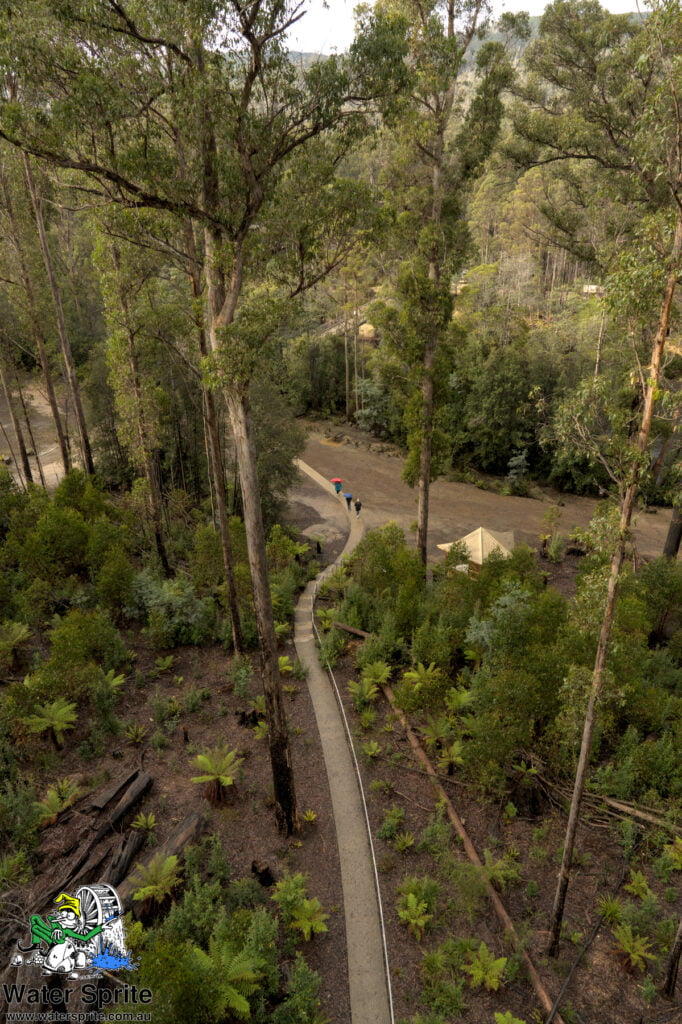
I liked the Airwalk, and the ground walks that are also there. The kids found the Airwalk a bit freaky, as it does tend to oscillate a bit as people walk on it. I really only noticed this when I went to brace myself on the sides to take photos – that was the only point it really became apparent to me. The kids were obviously more sensitive to the movement, however, and they were much slower making their way around the walk as a consequence.
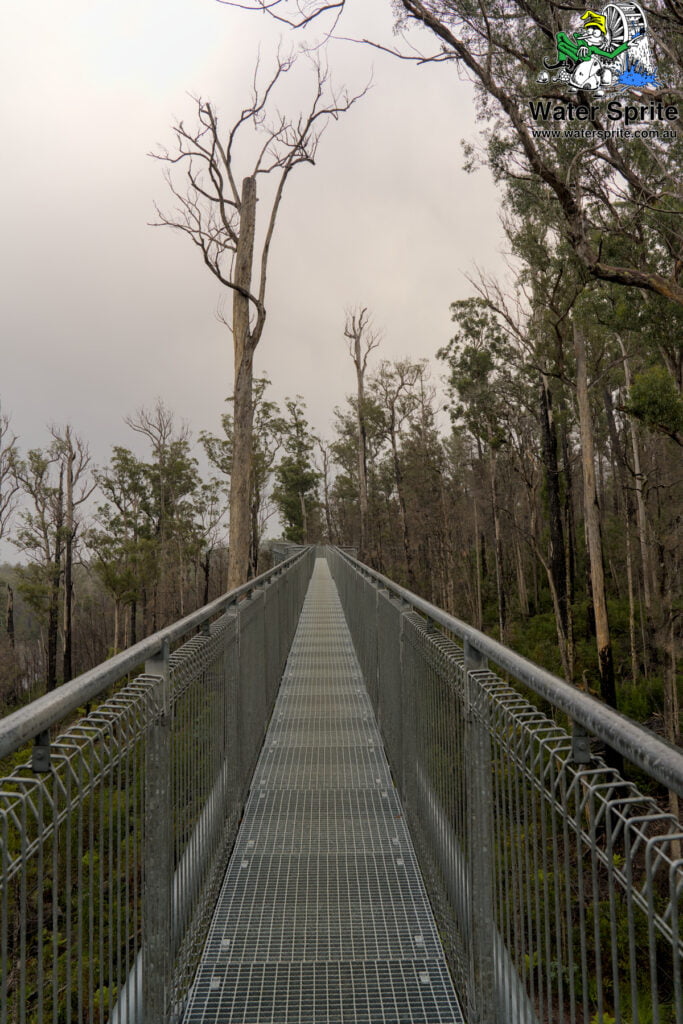
The site was badly burnt in the 2019 bushfires, and the ground is still recovering. A lot of the ground walks went through forest that had escaped being burnt, and the difference in the amount of ground cover was marked, even after four years. It was interesting to see the ground cover re-growing, however, and to see the toppled remains of the enormous trees that had stood around the walk prior to the fires. There are still many trees remaining, but I can only imagine what it must have been like before the fire.
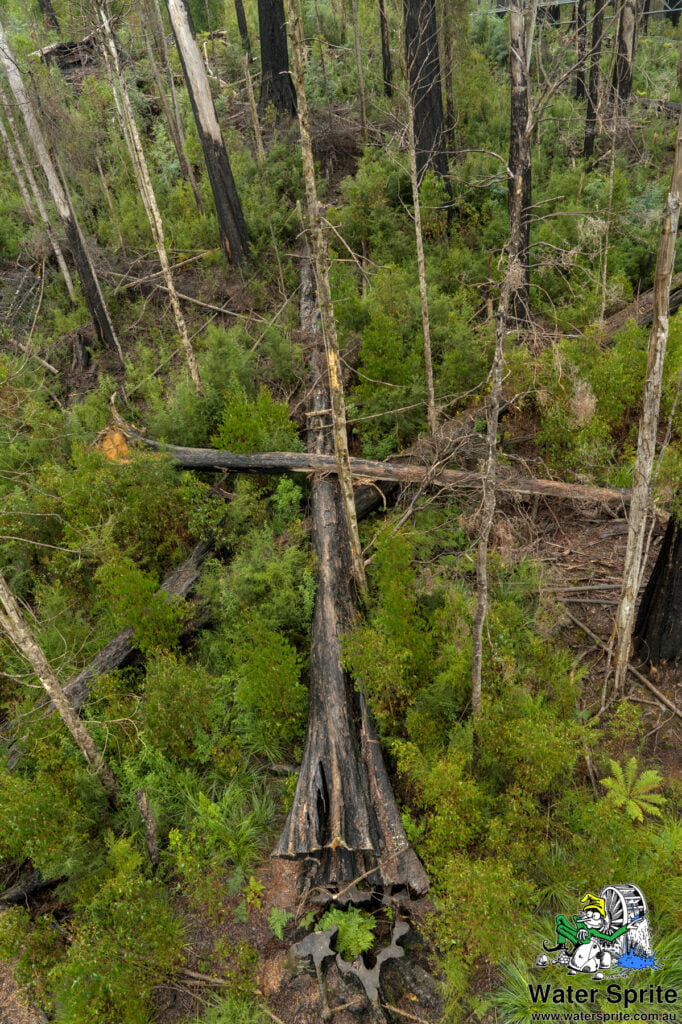
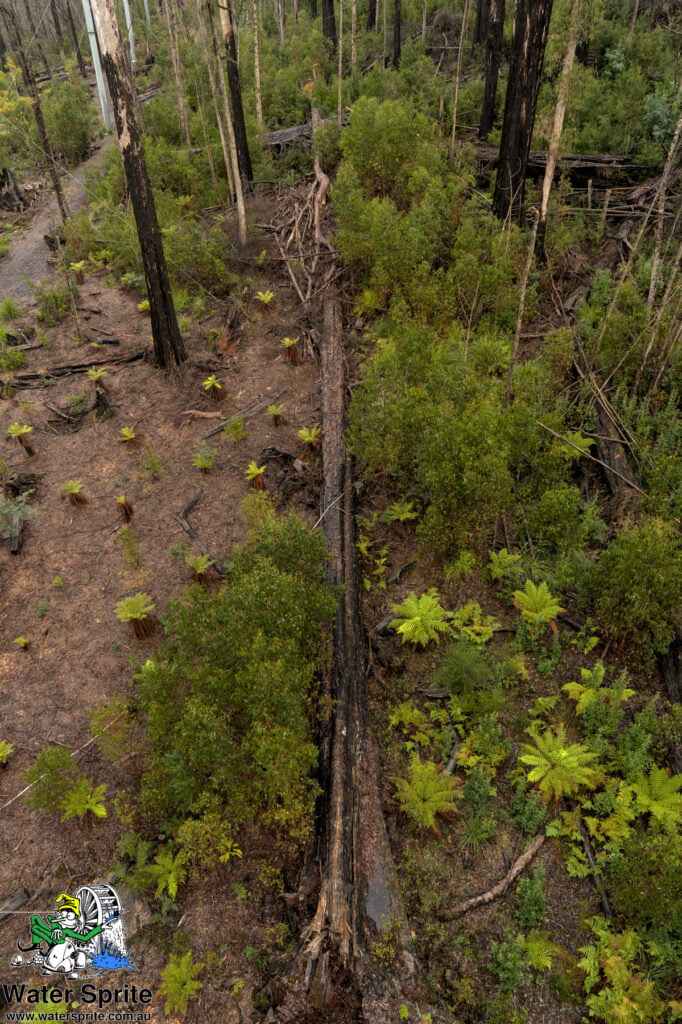
One last bit of the walk cantilevers out towards the river. From there you get an amazing view not only of the river, but also, looking upstream, you can see where the Picton River joins the Huon River, and a nice view of the local hill. Sadly, my photos from this section were washed out (figuratively speaking) by the oncoming rain storm, however, here is a view from elsewhere on the AirWalk to give you an idea. On a fine day (if such a thing exists in Tasmania), I would imagine the view up towards the junction and the hill whose name I failed to record would be an excellent photo. Not so much on the day we were there.
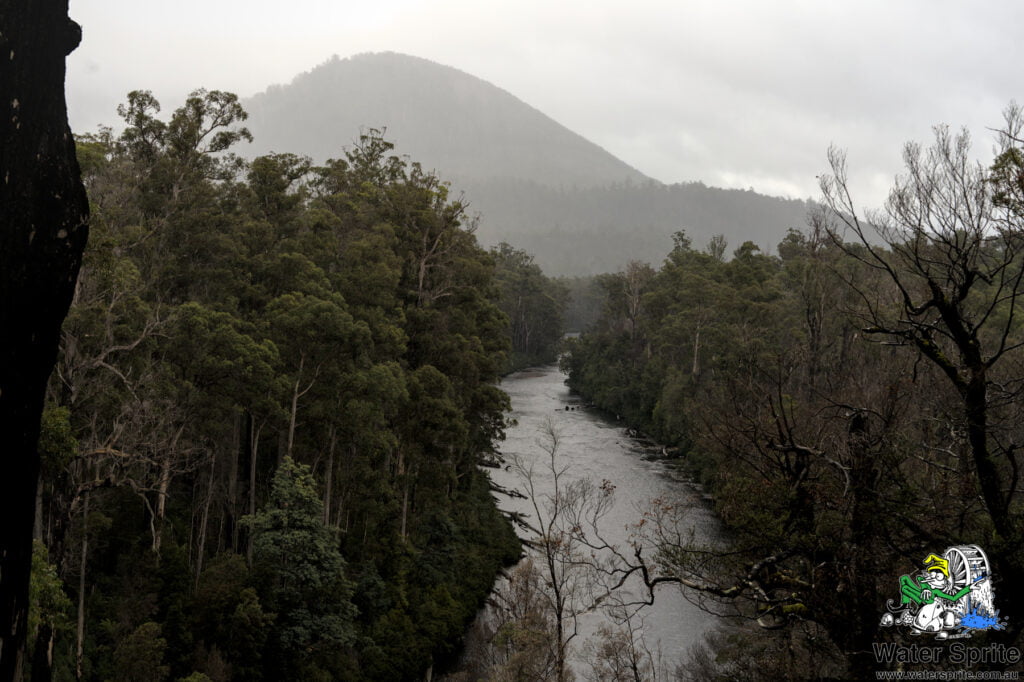
As the cantilever section was one of the few spots on the Airwalk that had a covered area, we sheltered there while the rainstorm passed. It only took about five minutes. As the shower passed over us, we were granted the amazing sight of a rainbow almost close enough you could touch it.
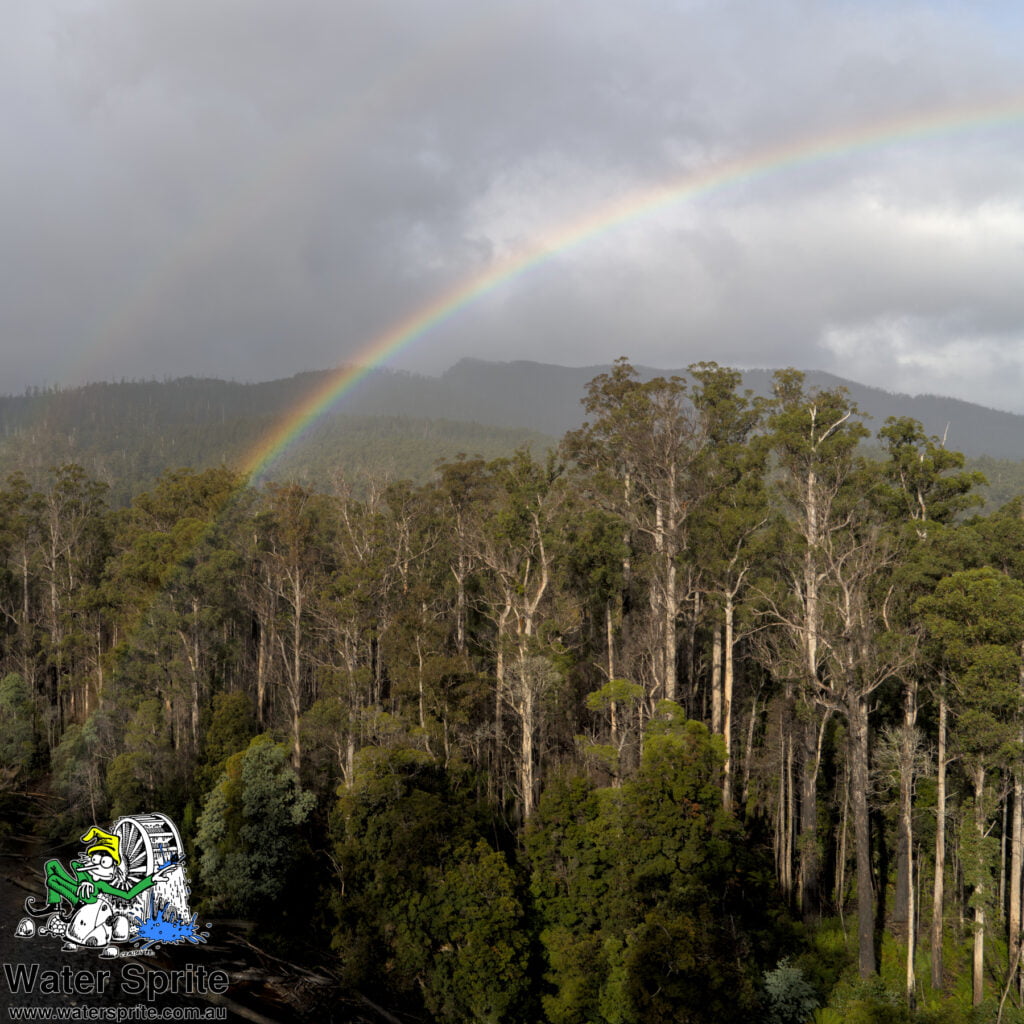
The Huon Pine walk
One of the ground walks on the site is a short(er) loop walk that takes in a mix of the local vegetation types. From towering Stringybark gums hundreds of years old, to young King Billy and Huon Pines, as well as other tree species unique or predominantly Tasmanian.
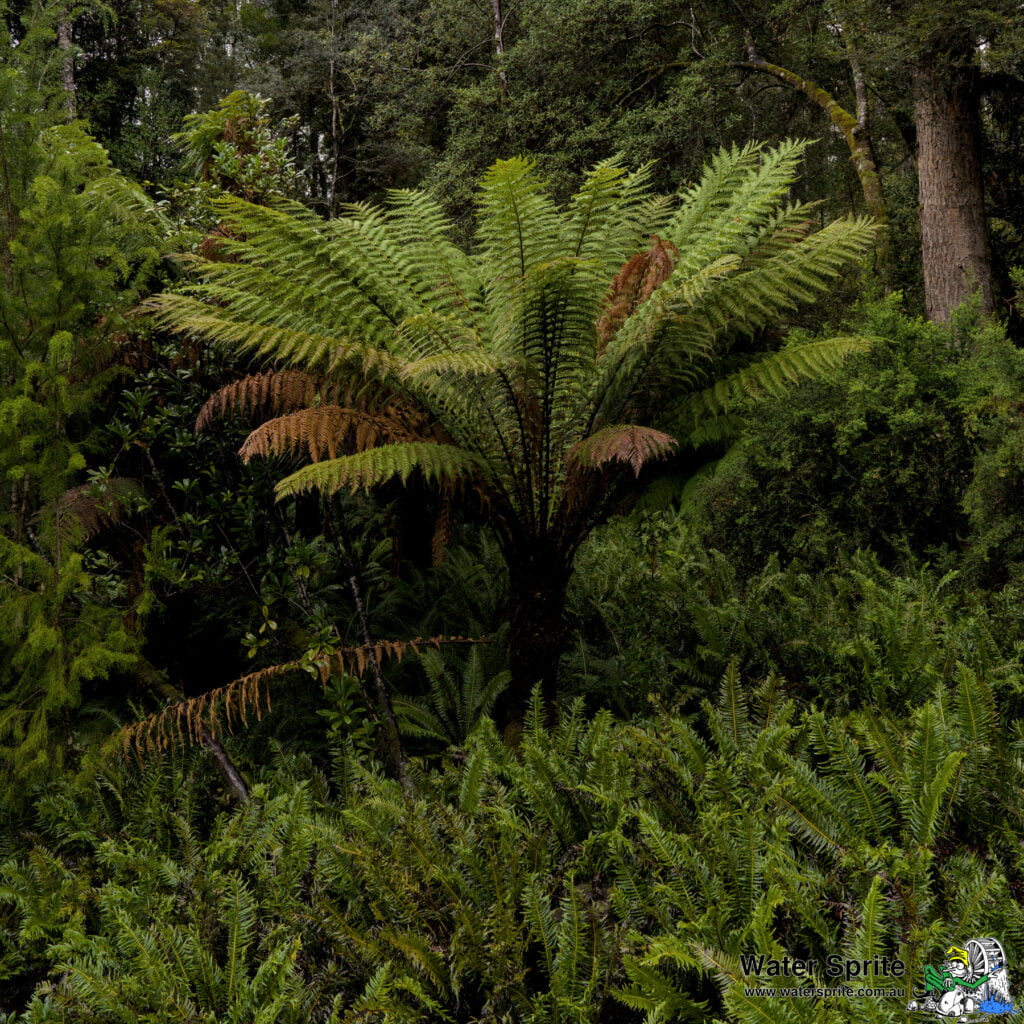
Of course, there were also tree ferns by the hundreds, and practically everything was covered by mosses and lichens. The two pine species were highly prized trees for their timber and so these trees are regrowth from when this area was very intensively harvested of these trees in the 19th and early 20th centuries.
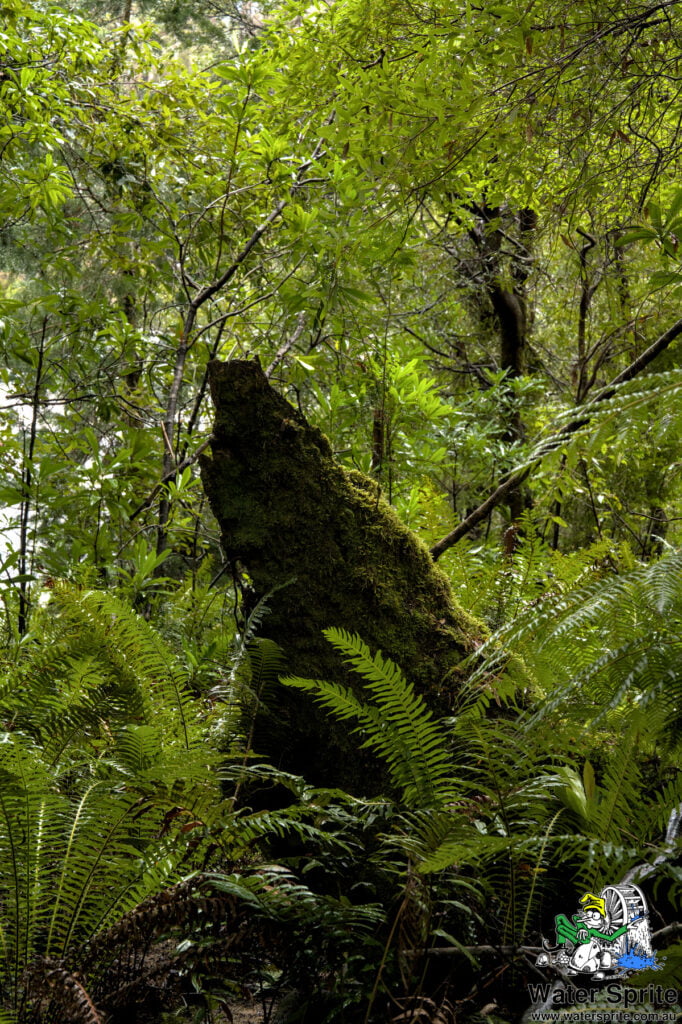
This walk snakes around through the trees, across a number of little bridges in a loop that takes you through the environment a little further away from the river (only maybe 20m or so!) and then comes back along the river. The Huon pines only grow pretty much right by the river banks, and further away from the river you get a slightly different mix of trees. You get to touch huge 400+ year old Stringybarks.
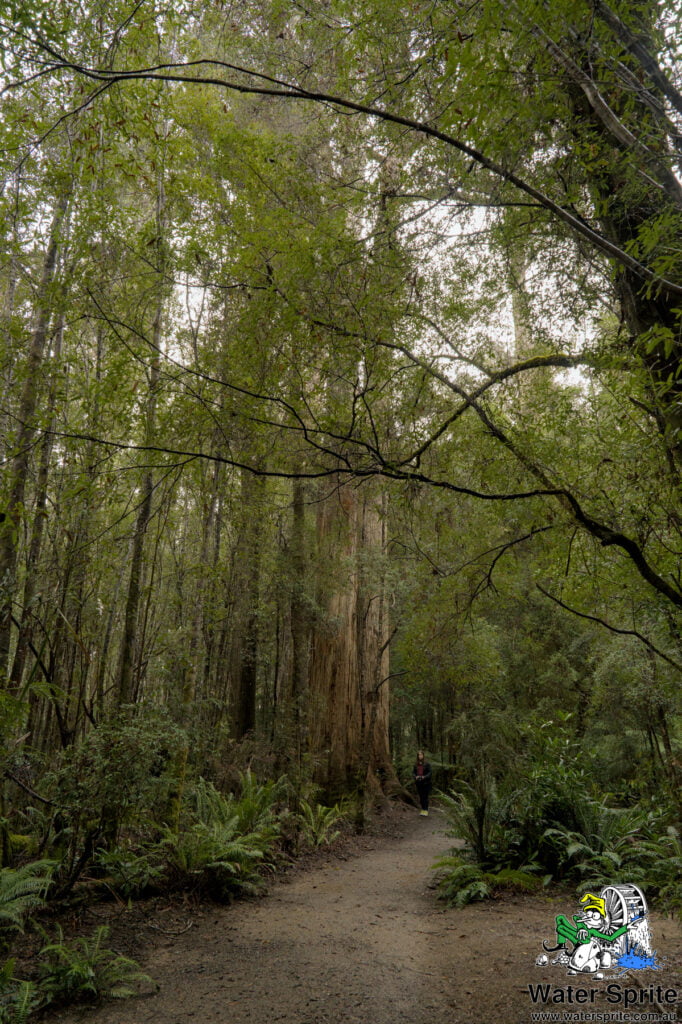
This walk also really showed the marked differences between those areas that burnt and those that didn’t in the 2019 fires. At least, I’m assuming that is the difference, as there were very definite patches where the undergrowth appeared to have been untouched while a few metres away were areas where the forest was still largely clear and recovering from having been burnt.
The Two Rivers Walk
We did this walk after lunch. It is the longest of the walk, but the kids insisted we had to do it because it included two rope bridges over the two rivers. It was an interesting walk, with a mix of environments, but did not have the same level of diversity as the Huon Pine walk – or maybe it was just that it wasn’t signposted as thoroughly and we didn’t notice. By the end of this walk JC was definitely flagging and had had enough. The bridges were cool, and provided some nice photo opportunities up their respective rivers into the surrounding hills.
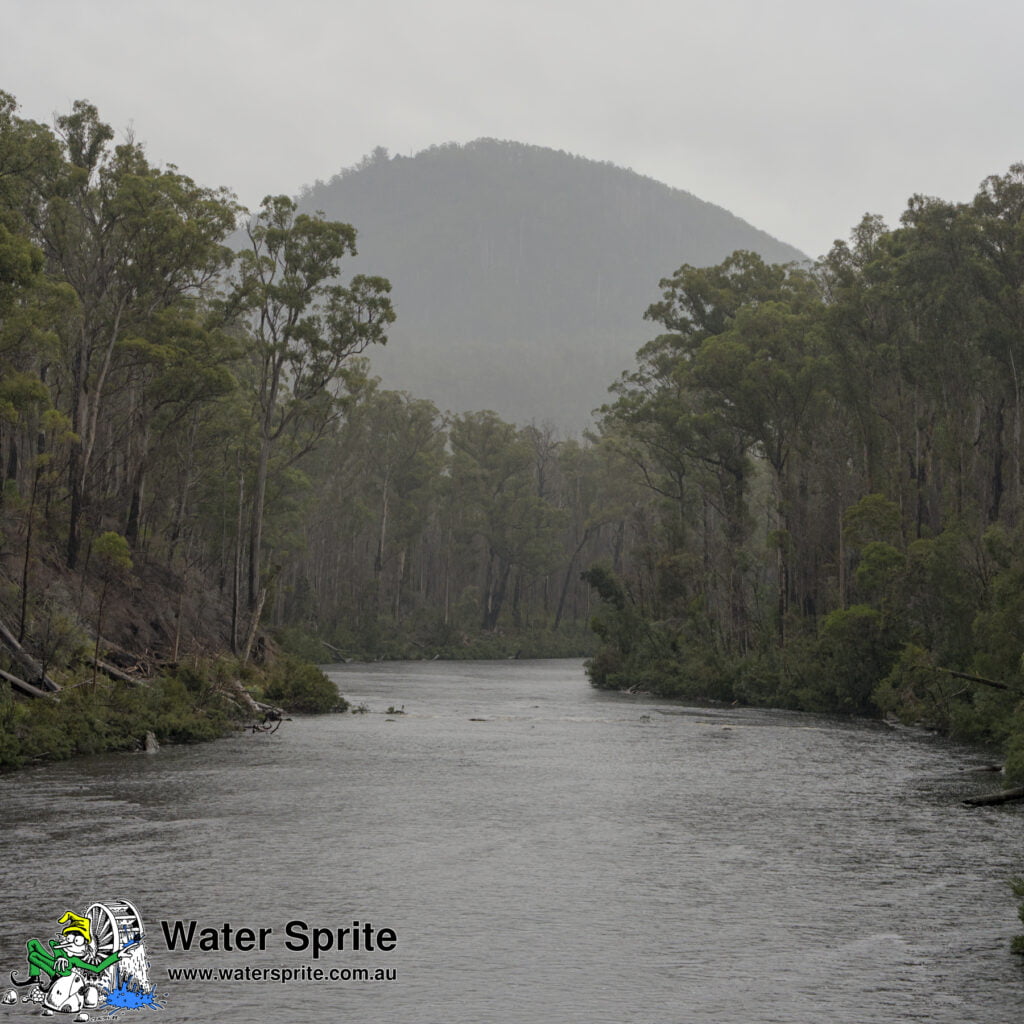
This location is where the colonial government used to have a revenue collector based – they used to collect a tax on the trees harvested or some such. He used to have a hut in the vicinity, and its location is signposted – but there is extremely little that remains except the remains of something constructed of stones that was presumably the fireplace for his hut. He apparently lived there with his wife and children for a number of years.
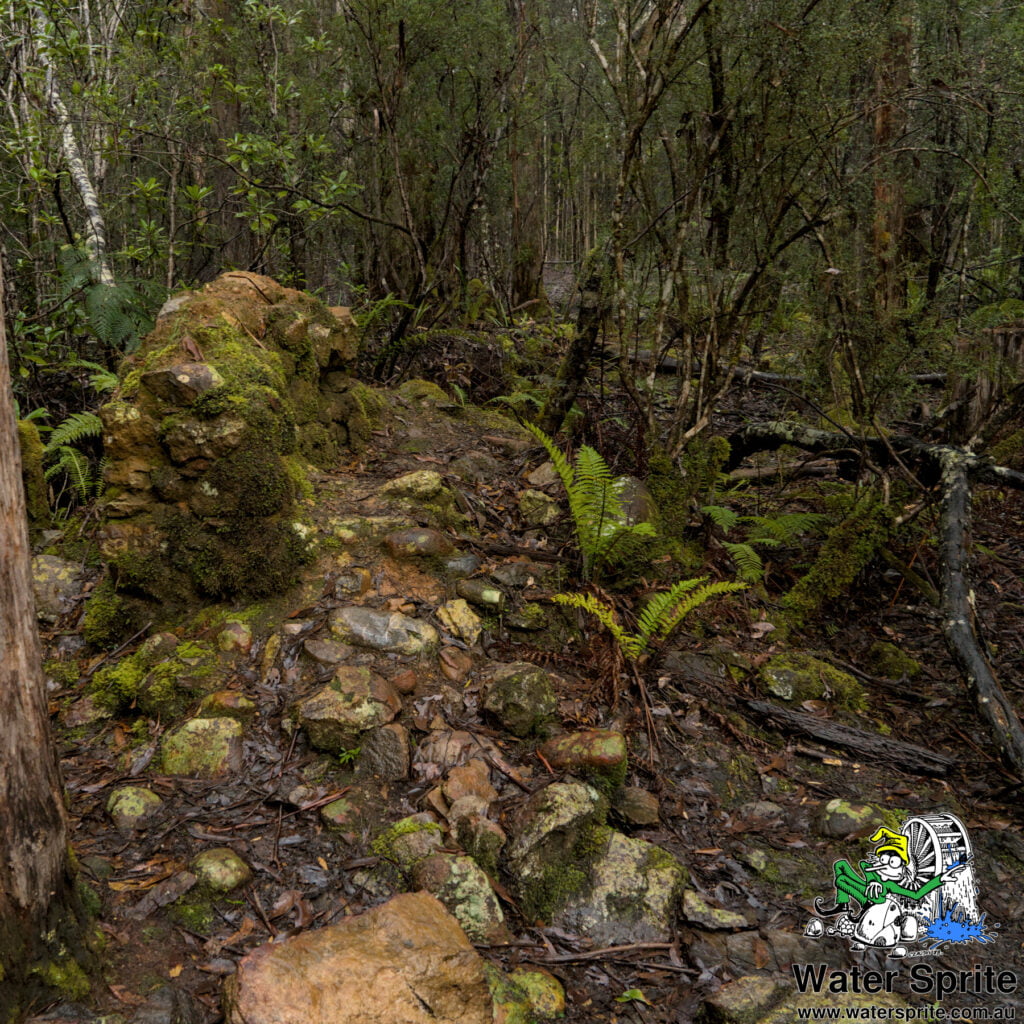
There is information about him and the work he did, and the lives and history of the Piners – the people who harvested the trees – showing in the information centre, but we went there after our walks and the kids were not that interested by that stage, so we did not see much of what was on show.
Photographically
I found this day to be challenging, although I didn’t realise quite how challenging until I went to process the photographs after the event. In the bits of the forest that still have their undergrowth, it is very dark under the trees. It was also an overcast day, but despite that the sky was still very bright. As a result, most of the photos that include any sky are seriously over-exposed in the sky, even though I’d turned the camera exposure setting down in an attempt to avoid that. Overall, it was not a good day for photographs, but then, that is true for most of the time we were in Tasmania.
I did, however, manage a few good shots, and I have saved them to last.






This post was not sponsored or endorsed
We were full fee-paying visitors to the Tahune Air Walk. We did not advise Tahune Adventures of our visit at any time before, during or after the visit and received no sponsorship or reward to produce this blog post. The information in this post is gleaned from information signage around the site and my own knowledge and experience. Any opinions expressed are my own and have not been endorsed by Tahune Adventures or any other person.
Website:
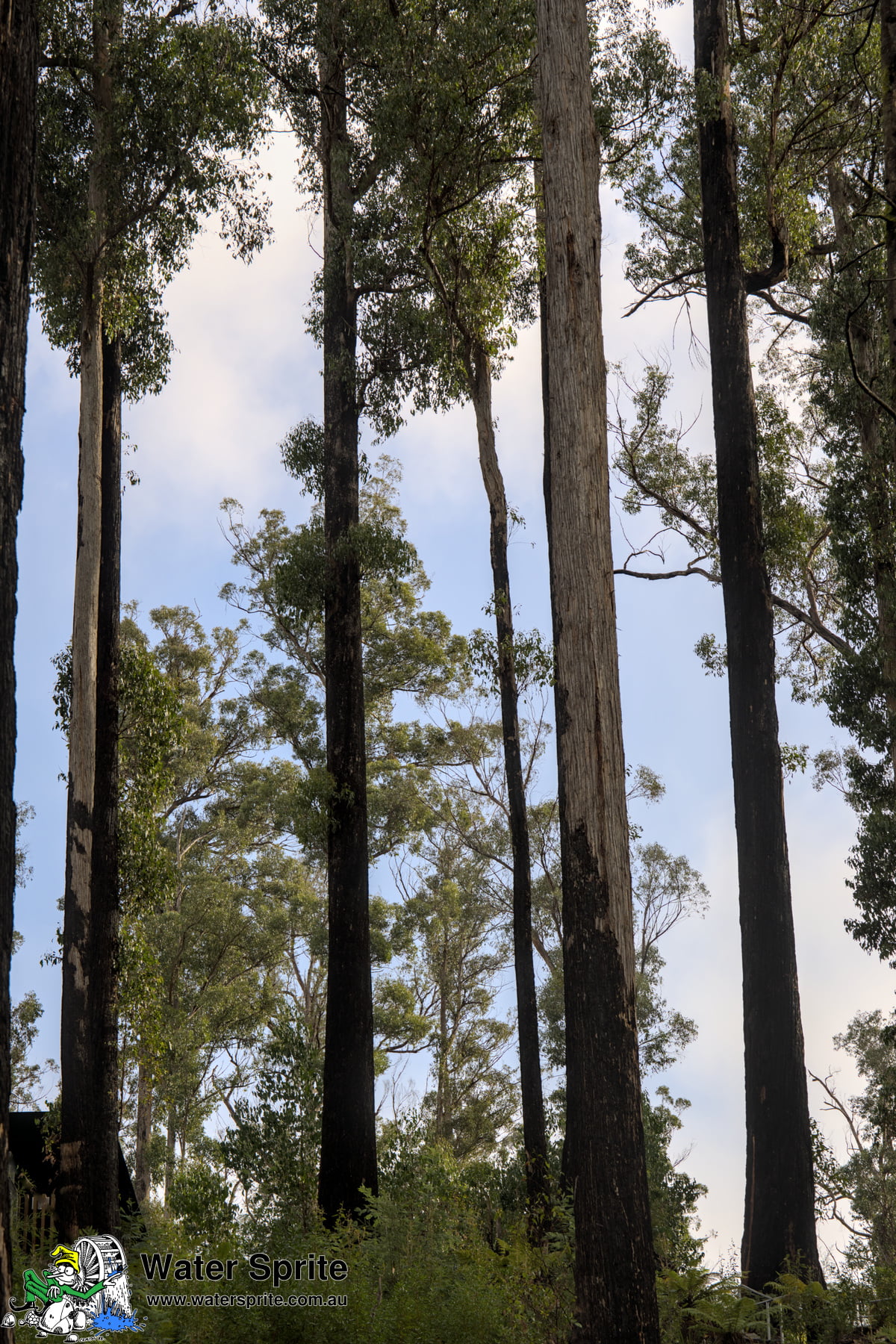
Leave a Reply